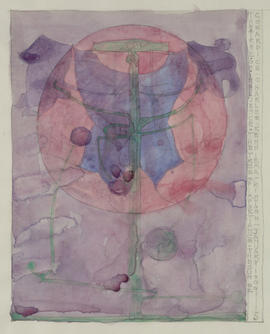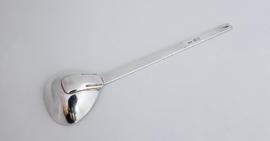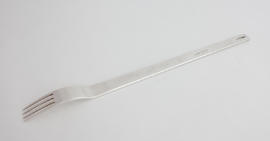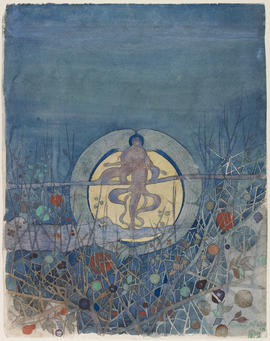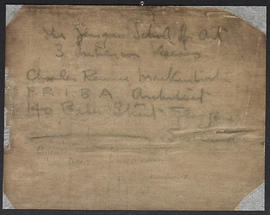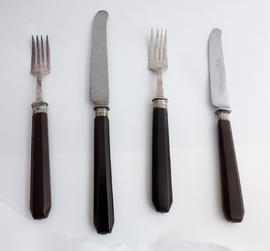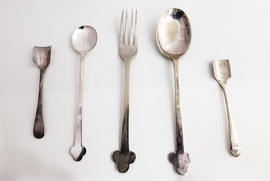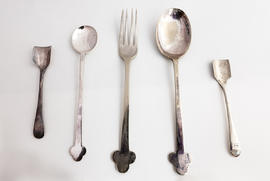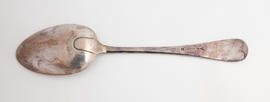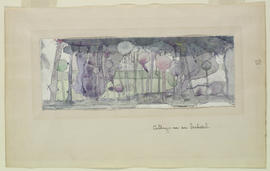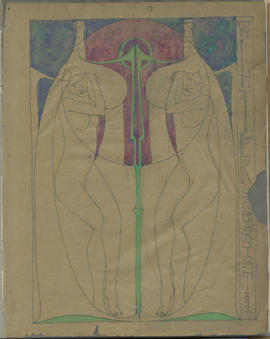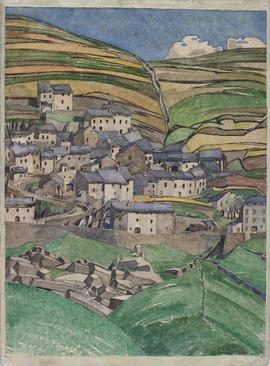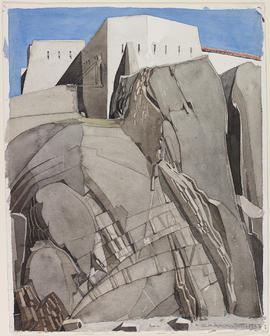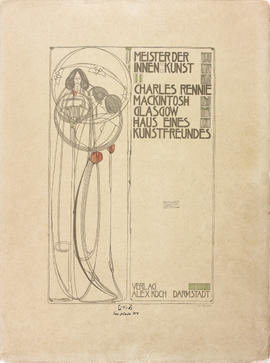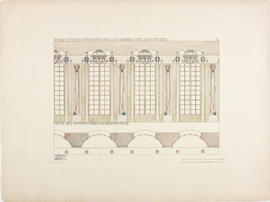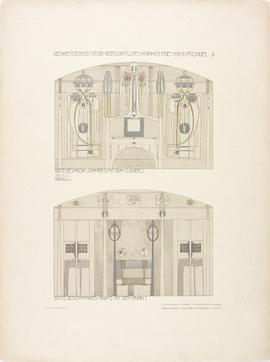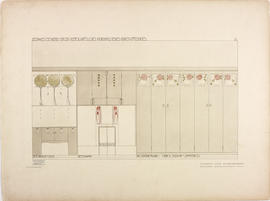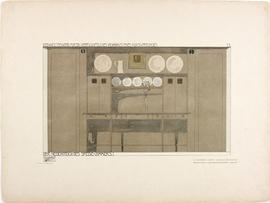- MC/A/2
- Item
- 1901
Designed for the 'Rose Boudoir', International Exhibition of Modern Decorative Art, Turin, 1902. This item was assessed for conversation in 2010 as part of the Mackintosh Conservation and Access project (2006-2010), and then again in 2018 following the fire in the Mackintosh Building in June 2018.
A Rose Boudoir included two gesso panels - composite works of plaster with pigment, set with glass beads - made exclusively by Macdonald. On the manifest for the exhibition, Mackintosh indicated that ‘duplicates only’ were available for sale. Two other versions, both in Glasgow, had the same design but with different palette and surface detail: The White Rose and the Red Rose hung above the mantle in the Mackintoshes’ own home, and can now be seen in the Mackintosh House at the Hunterian Art Gallery; and The Heart of the Rose belonged to Wylie Hill, a relative of Jessie Newbery, and was later given to the Glasgow School of Art. Previously it was assumed that these versions were created from a cartoon or template, each hand made, but it was difficult to tell which set came first, or even if they were made simultaneously. But recent analysis by Graciela Ainsworth Conservation Studio in Edinburgh has shown that the GSA version is not a gesso panel as we have come to understand Macdonald’s technique, but rather a traditional plaster cast that has been painted. This may seem like a minor technical point, but when considered alongside Mackintosh’s note that duplicates could be ordered, it reminds us that he carefully curated this space to show both that he and Macdonald could be commissioned to do entire rooms but were also very happy to have individual pieces replicated and sold on their own merit (information supplied by Dr Robyne Erica Calvert, Cultural Historian, Mar 2022).
Mackintosh, Margaret Macdonald

